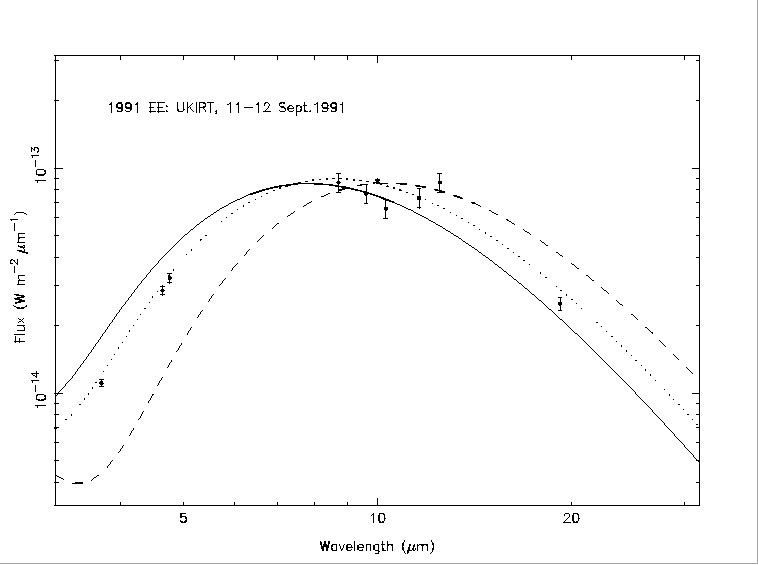
In recent years the definition of what constitutes an asteroid has become a bit blurred with the discovery of objects in the Kuiper Belt and the Centaurs and of comets that look like asteroids a lot of the time. However we can think of an asteroid as a small, usually rocky, object orbiting the Sun. Most of the known asteroids orbit in the region between the planets Mars and Jupiter in what is known as the "main belt" Another important group orbit ahead of and behind Jupiter in stable regions known as Lagrangian points and are sometimes called "Trojans" as they are all named after characters who took part in the Trojan wars. The main belt asteriods are probably material left over from when the planets were formed and which were unable to come together to make a planet because the powerful gravitational field of Jupiter scrambled their orbits so much they never managed to stick together. They are NOT the remains of an exploded planet. All the asteroids are small, the biggest is Ceres which is about 1000km in diameter, and they are called asteroids because unlike the planets, which in a telescope appear as a disk, they look "starlike" in even a big telescope.
However, not all asteroids are found in the main belt and Trojan regions, in 1932 a small object (about 10 kilometers across) was found in an orbit which came in from the main belt, crossed the orbit of the Earth, went around the Sun and then went back out to the main belt. It was called Apollo, after the Greek god of the Sun. Since then several hundred such objects have been found. Some of them cross the Earth's orbit and some come inside Mars but never approach the Earth. Depending on the exact shapes of their orbits these objects used to be classified as either Apollo objects, or Amors or Atens, but now astronomers tend just lump them all together and call them Near Earth Objects, or NEO's for short. Of course, if an NEO can cross the orbit of the Earth then there is a very small chance that on the day which it does the Earth might be at just the right place (or the wrong place depending on your point of view) for a collision to occur. This is very unlikely since the solar system is three dimensional and most times the NEO flies above or below the Earth's orbit, but over the lifetime of the Earth, about 4.5 billion years, such collisions are inevitable. It is likely that one such collision wiped out the dinosaurs about 65 million years ago. If you want more details try to find a copy of my book Cosmic Impact or one of the more recent books by other people on this subject. You could also visit the UK Near Earth Object Information Centre.
Finding out the sizes of these objects is quite difficult since they tend to be irregular (potato shaped) and we don't know how reflective they are. If all you do is observe the reflected light using an optical telescope you can't really tell if you are looking at a large dark object (like a bit of coal) or a small white object (like a snowball). The way around this problem is to observe simultaneously in visible light and in the infrared, at wavelengths of 10 and 20 microns. This helps because some of the sunlight arriving at the asteriod is reflected, and you measure that in the visible, and the rest is absorbed and warms up the asteroid. This is then re-emitted as far infrared (or heat) radiation which can be measured using telescopes such as UKIRT. Since the asteroid is in equilibrium with the sunlight that is arriving, from the ratio of the reflected (visible) and emitted (infrared) light you can find out both the size and reflectivity of the asteroid. Here is an example.

The points, with their up and down error bars which show the uncertainty in each measurement, are the flux we measured from an asteroid called 1991EE. The lines are different models of what flux the asteroid would emit depending on its size, reflectivity and rotation rate. We adjust these parameters in the model until we get a good fit, in this case shown by the ..... line. This model was done by my colleague Alan Harris at the German Institute for Planetary Exploration and has been submitted to the scientific journal ICARUS for publication.
Knowing the sizes of the Near Earth Asteroids is important so we can assess how much of a threat they present to life on Earth.
Return to
John Keith Davies
Astronomy Technology Centre, Royal Observatory, Blackford Hill,
Edinburgh, EH9 3HJ
j.davies@roe.ac.uk
tel: (44) 0131 668 8348 /
fax: (44) 0131 662 1668/